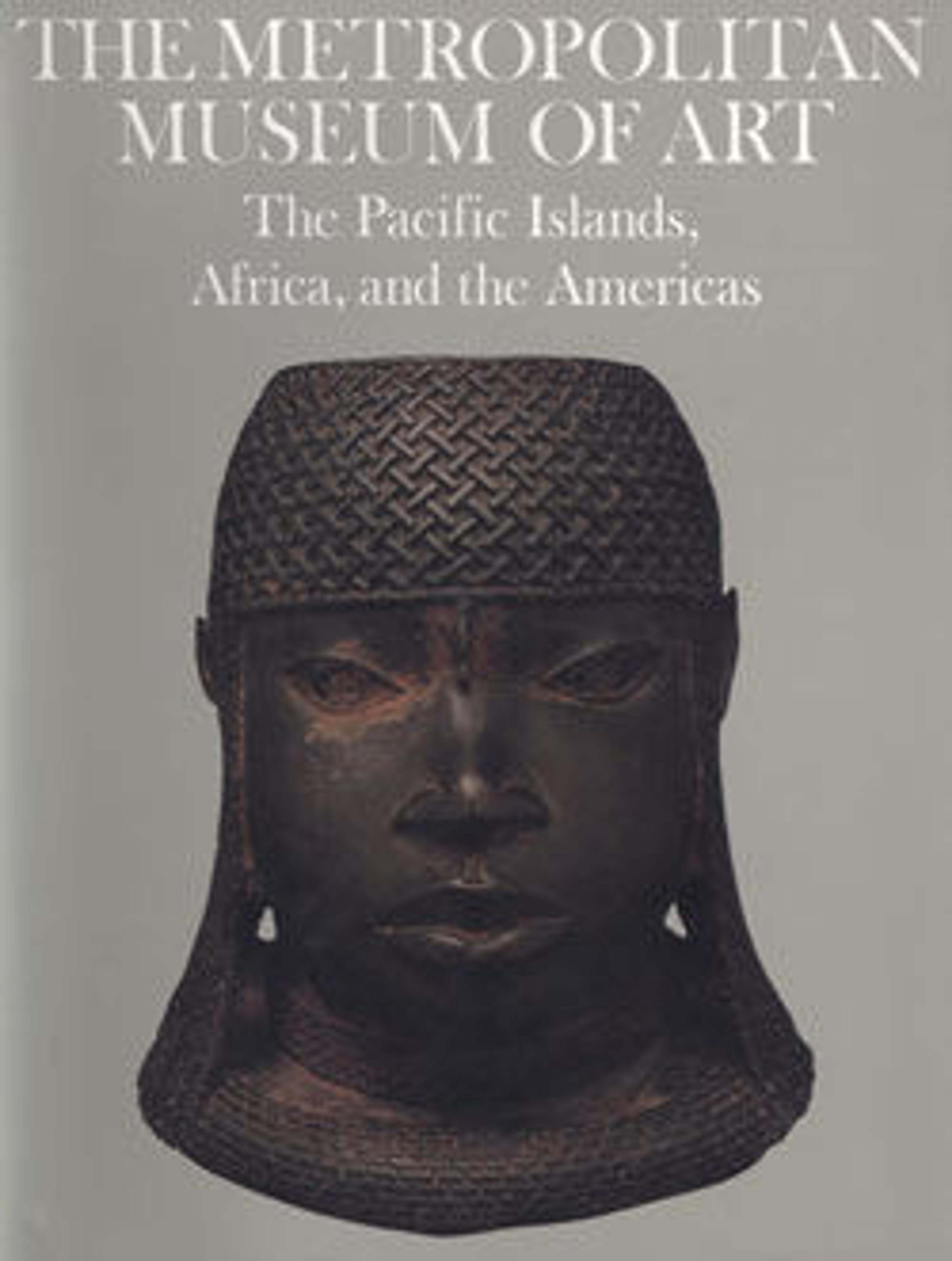Figure (Uli)
Like their neighbors to the north and south, the religion of the Mandak people of the Lelet Plateau in central New Ireland centered largely around the deaths of prominent men. The stylistic differences between the sculpture of the northern and central areas, however, are very marked. Instead of the intricate malagan carvings of the north, central New Ireland carvers produce more austere figures known as uli, which retain the raised arms and enclosing bands of malagan but are more massive and less elaborately adorned.
Uli were displayed during the long cycles of ceremonies that accompanied the exhumation and subsequent reburial of the skulls of prominent men. Feasting, including the consumption of dozens of pigs, was an important activity in these occasions. Having both a phallus and prominent breasts, uli are hermaphroditic, a feature that may symbolize the fertility of people, animals, and gardens, and represent the powers of a chief to bring success in warfare.
Uli were displayed during the long cycles of ceremonies that accompanied the exhumation and subsequent reburial of the skulls of prominent men. Feasting, including the consumption of dozens of pigs, was an important activity in these occasions. Having both a phallus and prominent breasts, uli are hermaphroditic, a feature that may symbolize the fertility of people, animals, and gardens, and represent the powers of a chief to bring success in warfare.
Artwork Details
- Title:Figure (Uli)
- Date:mid-19th–early 20th century
- Geography:Papua New Guinea, Mandak-Barak area, Cenral New Ireland
- Culture:Central New Ireland, Mandak-Barak region
- Medium:Wood, paint, fiber, shell
- Dimensions:H. 52 x W. 16 x D. 13 3/4 in. (132.1 x 40.6 x 34.9 cm)
- Classification:Wood-Sculpture
- Credit Line:Gift of Sarah d'Harnoncourt, 1977
- Object Number:1977.455
- Curatorial Department: The Michael C. Rockefeller Wing
More Artwork
Research Resources
The Met provides unparalleled resources for research and welcomes an international community of students and scholars. The Met's Open Access API is where creators and researchers can connect to the The Met collection. Open Access data and public domain images are available for unrestricted commercial and noncommercial use without permission or fee.
To request images under copyright and other restrictions, please use this Image Request form.
Feedback
We continue to research and examine historical and cultural context for objects in The Met collection. If you have comments or questions about this object record, please contact us using the form below. The Museum looks forward to receiving your comments.
